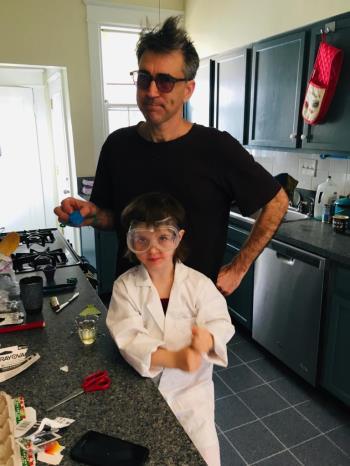
Abstract:
Coronavirus Disease 2019 (CoViD-2019) is caused by a novel coronavirus, now named Severe Acute Respiratory Syndrome Coronavirus 2 (SARS-CoV-2), which appears to have made a jump from an animal reservoir to humans in south-central China in late 2019. SARS-CoV-2 is a positive sense single stranded RNA virus, a family of viruses which causes diseases including hepatitis C, West Nile disease, dengue, SARS, MERS, and the common cold. The diseases such viruses cause vary in their contagiousness and morbidity. CoViD-2019 appears to package an especially bad combination of these properties.
In only a few months SARS-CoV-2 has been attributed as the cause of death for hundreds of thousands of people globally, with hundreds of thousands of additional deaths looming. The rapid spread of SARS-CoV-2 has meant redefining almost every normal societal disease response process. In the short term, this means creating new travel restrictions, quarantining and social distancing protocols, developing new rapid and accurate testing methods, and testing and repurposing existing drugs which have already passed clinical trials for other diseases as emergency treatments. Some of the most promising treatments for CoViD-2019 currently include drugs which were never brought to market, developed for previous epidemics for which the clinical trial process was short-circuited. In the long term, to deal with novel emerging infectious diseases, society will benefit greatly from having a quiver of drugs and drug leads that can be rapidly developed and brought to bear.
There are multiple points in the viral replication cycle that drugs can interfere in, but interference in viral polymerase function has proven to be especially effective, thus nucleoside analogues are often the go-to areas of chemical space chemists explore to find therapeutics.
From another angle, it has been suggested life began when information encoding molecules simpler than RNA monomers spontaneously formed in the primitive environment. To explore this question, we previously developed the single largest in silico library of nucleic acid analogues in a search for molecules which might have enabled the onset of Darwinian evolution. This construction of this library points to there being new ways to think about exploring chemical space.
In this talk the connections between these two questions will be explored, and the potential use of in silico libraries to treat emerging infectious viral diseases will be explored.
Speaker: Dr. Jim Cleaves, ELSI

Speaker bio: Jim Cleaves is an associate professor at the Earth-Life Science Institute at the Tokyo Institute of Technology. He uses computational and laboratory models to understand fundamental questions in molecular reactivity and speciation in complex reactions which help solve problems related to the origins of life, organic geochemistry and molecular interactions.
ELSI Host: Irena Mamajanov
Date: May 22, 10:30-11:30
Venue: Online
